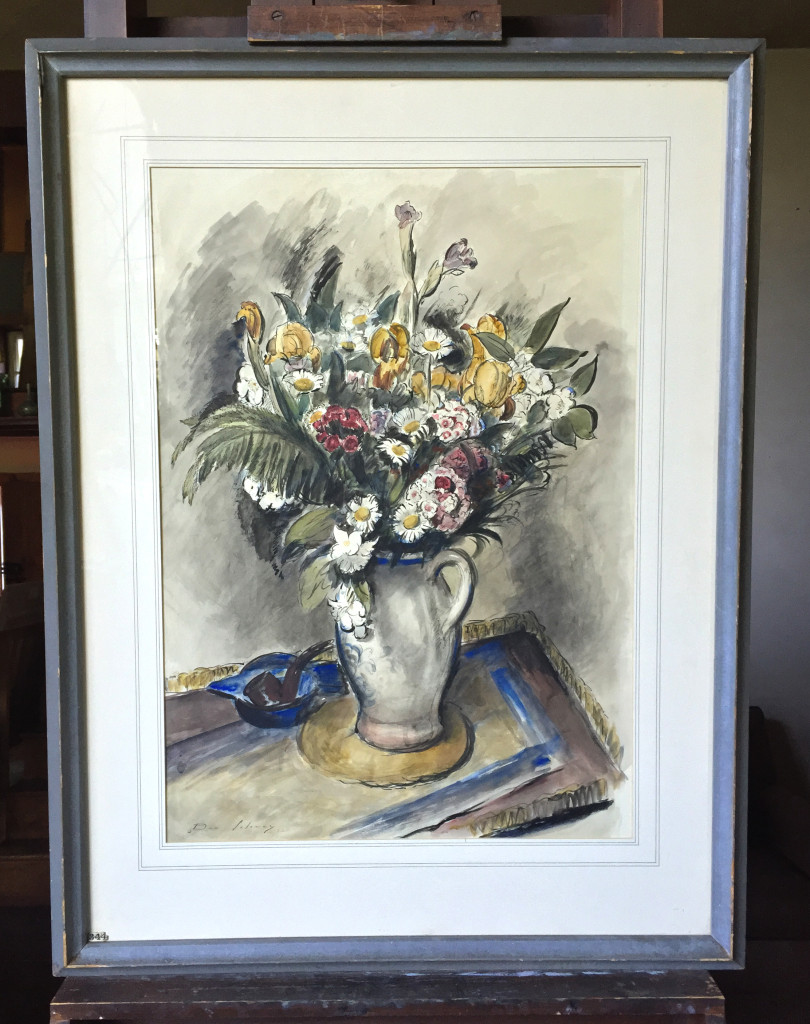The Art Institute of Chicago is one of America’s oldest, and most prestigious museums. It’s collection is filled with masterpieces of Impressionist and Post-Impressionist art; Old Masters; European and American decorative arts; Asian art; modern and contemporary art; architecture, industrial and graphic design; and American art such as Grant Wood’s famous “American Gothic†and Edward Hopper’s “Nighthawks.â€
For three-quarters of a century, the Art Institute mounted annual exhibitions of American art, which included a wide range of painters, both well known and emerging, from across the country. Ben Solowey was frequently included in this survey, and was often part of the smaller, but distinctive, touring exhibitions of the best from each year’s display.
In Ben Solowey’s Paper Trails, visitors will have the opportunity to travel back in time to 1944 to see Ben’s entry in the annual show, his striking“Spring Flowers.†
This lovely watercolor whose subject was almost certainly culled from Ben’s garden here on the farm is a terrific example of his still life painting of the period. The angle of the picture frame, the colors, the personal touches such as the pipe and ashtray, and the flowered pitcher (which has been featured in Solowey still lifes for nearly twenty years at this point in his career), are all hallmarks of a signature Solowey painting from the 1940s.
We are presenting the work exactly as it looked to audiences at that time in the same grey-blue frame with its exhibit sticker still affixed to the glass. This work hung alongside works by Charles Sheeler, Paul Cadmus, Charles Burchfield, Marc Chagall, George Grosz, Reginald Marsh, Man Ray, and many others in an exhibit that ran from June to August before touring to several other museums.
We will have the watercolor along with its crate in Ben Solowey’s Paper Trails to document the various institutions it visited after it left the Art Institute before returning to Bucks County, along with the catalogue from the 1944 exhibition and several others at the Chicago landmark that Ben was represented in. We invite to come see this beautiful work that impressed audiences of the period and the show’s three-man jury which included Andrew Weyth.










